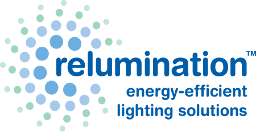Warehouse operation is costly. The need for efficiency and cost-effectiveness in large-scale facilities is more evident than ever. While some facility managers try their best to improve their efficiency, many miss out on savings.
LED lighting isn’t a new concept, but the advancements in technology since the inception of LED lighting have made strides toward better energy efficiency than ever before. Smart sensors are a recommended addition when upgrading your existing lighting to LED in order to maximize savings and optimize the facility to run without disruption.
Let’s dive into how smart sensors benefit warehouses, their employees, and managers.
Understanding Smart Sensors
Smart sensors detect environmental conditions and help to adjust lighting accordingly. These sensors can monitor factors such as occupancy, daylight availability, and even specific activities within the warehouse by location. By leveraging this data, they enable lighting systems to operate only when needed to maximize energy savings and minimize waste.
Optimizations Using Smart Sensors
1. Occupancy Detection
One of the primary functions of intelligent lighting in warehouses is allowing your sensors to monitor occupancy in any given area using motion detection. You have the ability to identify when an area is occupied and automatically adjust lighting levels. In large warehouses, this means that lights can dim or turn off entirely in unoccupied sections, leading to substantial energy savings.
For property managers, this capability also extends the lifespan of newly installed fixtures and lower maintenance costs. The data gathered about occupancy within your facility is saved and can be reviewed regularly by operations managers to determine further optimizations within the facility to improve employees’ day-to-day experience.
2. Daylight Harvesting
Natural light is a powerful ally in energy efficiency. Daylight harvesting is the process of utilizing daylight, when available, and lowering light levels from in-facility fixtures. The fixtures return to their full brightness only when they need to. This technique creates an optimized environment where lighting is only used as much as is needed throughout the day.
By dimming or turning off lights in well-lit areas, property managers can further reduce energy consumption, creating a more sustainable operation. Daylight harvesting also significantly impacts employee morale, as access to daylight and less exposure to overhead lighting improve energy levels and mood.
3. Personalized Control
Smart sensors enable facilities to adapt their lighting conditions to what is happening in the facility in real-time. For example, if a warehouse experiences a sudden influx of activity—such as during peak hours or special projects—smart sensors can increase lighting levels in those areas. On the flip side, during quieter periods, they can dim or turn off lights to conserve energy.
This flexibility is particularly beneficial in warehouses with fluctuating operations. Property managers can tailor lighting solutions to fit their facility’s specific needs, making sure that resources are allocated efficiently.
4. Remote Monitoring and Management
Modern smart sensors come with modern solutions. Not all managers are able to be on-site at all times, so using smart sensors that often come equipped with connectivity features can provide remote monitoring and management options. Property managers can oversee lighting systems from a centralized platform, adjusting settings and schedules as necessary without needing to be physically present in the warehouse.
Remote management capabilities also allow for proactive maintenance. When a sensor detects an anomaly—such as a burned-out or malfunctioning light—it can alert the facility manager, speeding up repairs and lowering downtime. This not only enhances safety but also minimizes disruption to operations.
The role of smart sensors in optimizing warehouse lighting cannot be overstated. Anyone looking to upgrade their facility’s lighting to an energy-efficient LED system should consider them as a critical component to efficient operations. Integrating intelligent sensor technology with high-quality LED lighting is a game-changer for property managers looking to minimize operational costs while maximizing productivity.
If you’re ready to explore how customized LED lighting upgrades and smart sensors can transform your warehouse operations, Relumination’s turnkey energy-efficient lighting solutions make the upgrade process pain-free. Let’s create a brighter, more efficient future for your facility.
